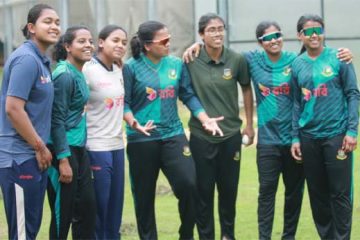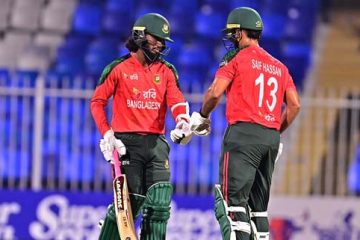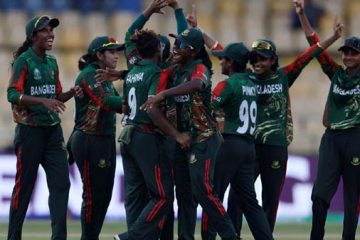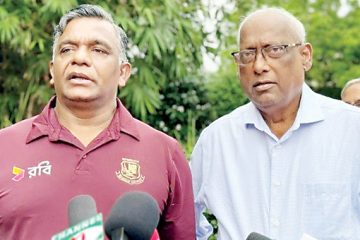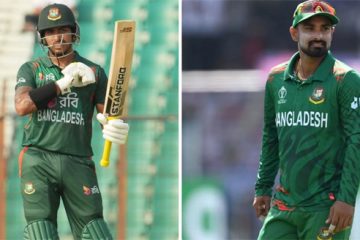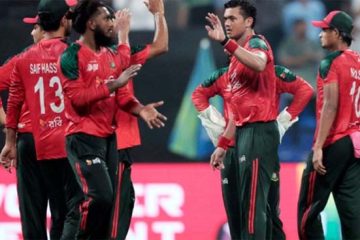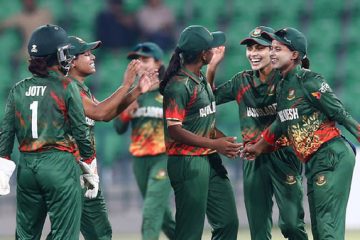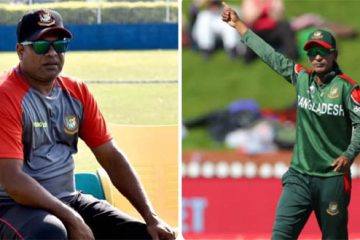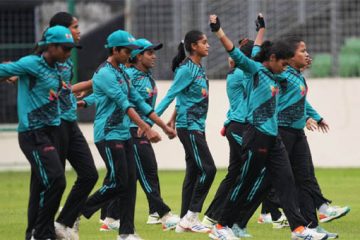The image of Shakib Al Hasan and Mushfiqur Rahim in tears after the Asia Cup final in March is one that springs readily to mind when looking at the Bangladesh cricket team’s performance in the year just going by. The chance to achieve their biggest success was shattered following a two-run defeat to Pakistan at the Sher-e-Bangla National Stadium in March, but the crying cricketers won the hearts of millions through their outstanding performance in the region’s showpiece event.
The rousing performance also served notice of a much improved side, especially in the one-day version of the game, and the seeds sown in the Asia Cup came out in full bloom in the latter part of the year when they won a one-day series 3-2 against a fancied and in-form West Indies.
The Tigers, as they are affectionately called, made the best of the few opportunities they were handed in 2012. It is a reality of the times that at the end of each year the cricketers hog the spotlight as far as sports in the country go. It is much the same this year but the crucial and pleasant difference is that while in previous years the spotlight was trained on one or two cricketers because of their exceptional performances, in 2012 the object of congratulation is the entire team as Bangladesh played as a ‘unit’ to achieve great success in ODI cricket. 2012 was the only year in their history that Bangladesh have more wins than losses against full-strength, top sides in the ODI format.
The Tigers’ performances did not only depend on contributions from one or two cricketers, rather everyone in the playing eleven and the squad did their part to make sure they won five ODIs out of nine. The bowling unit, which has always been considered a weak link, deserves special praise for the way they played their part. One instance is enough to exemplify the Tigers’ improved bowling discipline and stomach — Shafiul Islam came in place of injured Mashrafe Bin Mortaza in the series-deciding one-dayer against West Indies and the lanky paceman did exactly what the injured Mashrafe was doing in the previous matches by tying down and then taking the crucial wicket of dangerman Chris Gayle.
That example speaks of the excellent team that translated into spirited and disciplined on-field displays, for which the team management deserves substantial credit.
It is a common feeling that the best must come from Shakib Al Hasan and Tamim Iqbal if Bangladesh want to do well against top international sides. The contribution of the two world-class players were doubtless immense in Bangladesh’s success in the year, but players like captain Mushfiqur Rahim, all-rounder Nasir Hossain and vice-captain Mahmudullah Riyad stepped up at various crucial junctures to give the lie to the long-held dependence on the two stalwarts. What was most refreshing for Bangladesh cricket was that young cricketers like off-spinner Shohag Gazi, — a real revelation for Bangladesh cricket — Anamul Haque and Mominul Haque have provided real signs that good times lie ahead.
One cannot forget the form of Tamim, who had hit four fifties in a row in the Asia Cup to silence the critical storm that was building before the tournament. Shakib’s 31-ball 49 played a big part in swinging the game Bangladesh’s way against India, but one must also praise the three top-order batsmen — Tamim, Nasir and Jahurul Islam — for their half-centuries and Mushfiqur’s 25-ball 46 when looking back at the successful chase of a 289-run target. In the game against Sri Lanka, Nasir and Riyad kept their cool after Shakib’s fifty to set up the final against Pakistan.
And then the Tigers showed how much they had grown as an international side by winning the end-of-year ODI series against the West Indies without their talisman, Shakib, who missed the ODI series because of a shin bone injury, especially as the pre-series prediction in many quarters was a 5-0 whitewash in favour of the Caribbeans.
Shohag had a series to remember for a long time as he carried his impressive form of the Test matches into the ODIs to make matters difficult for the tourists along with veteran left-arm spinner Abdur Razzak. Anamul’s maiden hundred was another brilliant highlight in the series. The impression of Bangladesh becoming a true team in 2012 is only strengthened by the fact that Tamim was not in his best form during the series.
Bangladesh played nine ODIs, the fewest since 2001, but the figure was more pathetic in Test cricket as they got to play only two Tests in the entire year. The Tigers played their first Test in almost a year when they took on the West Indians in the first of two matches. Mushfiqur’s men might not have taken as big a step forward in the Test arena as they did in the ODI format, but they had some notable positives in the two defeats against West Indies.
In Tests the Tigers somewhat overcame almost a year’s gap by racking up their highest score of 556 in the first match against the West Indies in November. Although the series was lost 2-0, there were encouraging performances from various members — Naeem Islam’s patient hundred in the first Test, Shohag’s bowling, and Abul Hasan’s debut hundred batting at number ten in the second Test — but the team has a ways to go to be competitive in the longest form.
In T20s it was an ordinary year, with defeats to Scotland, the Netherlands and an early exit from the World twenty20 in Sri Lanka.
But the year will still be remembered for the Tigers’ achievement in ODI cricket, and most of all for the teamwork that brought about those successes.
-With The Daily Star input



